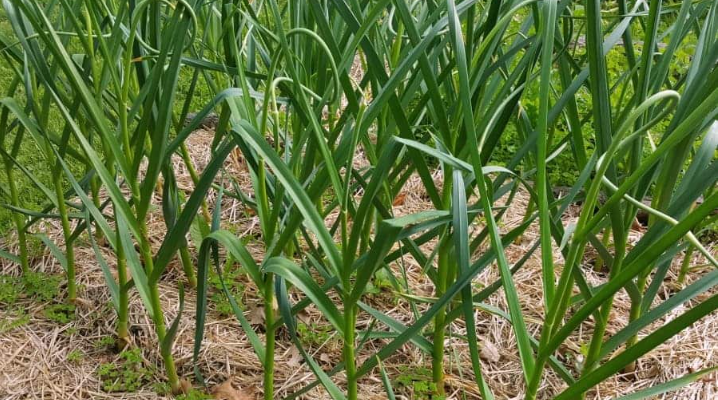
Garlic is a staple in many kitchens, cherished not only for its robust flavor but also for its numerous health benefits. For those who grow their own garlic, knowing when to harvest garlic is crucial for ensuring the best taste and storage longevity. In this article, we will delve into the growth cycles of garlic, signs to watch for, and the best practices for harvesting and storing your garlic crop.
Understanding Garlic Growth Cycles
Garlic is a perennial plant that thrives in well-drained soil and full sunlight. It typically starts its growth cycle in the fall and continues through the winter months, becoming more active in the spring. By early summer, garlic plants reach maturity. Understanding the specific stages of growth can help you determine the perfect time to harvest your garlic.
Garlic varieties can be broadly categorized into hardneck and softneck types. Hardneck garlic generally produces a flower stalk (scape) and is often hardier in colder climates. Softneck garlic, on the other hand, is more adaptable to warmer conditions and is usually what you find in grocery stores. Both types follow a similar growth pattern, but they may have slight differences in their maturation timelines.
Signs That Garlic is Ready to Harvest
Knowing when garlic is ready to harvest involves observing several key indicators. One of the most obvious signs is the yellowing of the lower leaves. As garlic matures, the lower leaves will begin to turn yellow and die back, while the upper leaves remain green. This process typically starts in late spring to early summer, depending on your local climate.
Another important sign is the size and firmness of the bulbs. Mature garlic bulbs should be well-developed, with individual cloves separated but still tightly packed within the outer skin. Gently digging around the base of the plant can help you assess the bulb size without disturbing the roots too much.
Timing is crucial—harvesting too early can result in smaller, less flavorful bulbs, while waiting too long can lead to overripe garlic with a tendency to split. Observing these visual cues will help you decide the optimal moment for harvest.
When Is Garlic Ready To Harvest?
The best time to harvest garlic often depends on your region’s climate and weather conditions. In general, garlic is ready to be harvested when about half of the leaves have turned yellow. In warmer climates, this might be earlier, while cooler regions may see a slightly delayed harvest.
For a more precise indication, you can also check the condition of the garlic scapes. If they have curled and dried, it’s usually a good time to start checking the bulbs. Additionally, monitoring soil moisture and avoiding wet weather conditions will help ensure a successful harvest.
Step-by-Step Guide to Harvesting Garlic
Harvesting garlic requires careful handling to prevent damage to the bulbs. Start by gathering your tools: a hand fork or garden spade, gloves, and a basket or container for collecting the bulbs.
- Loosen the Soil: Gently loosen the soil around the base of the plant, being careful not to pierce the bulbs. Use a hand fork or spade to lift the garlic without pulling on the leaves, which can cause damage.
- Remove the Bulbs: Once the soil is loosened, gently pull the bulbs from the ground. Be cautious to avoid bruising the cloves.
- Clean and Cure: Shake off excess soil and trim the roots to about an inch. Lay the garlic in a single layer in a cool, dry, and well-ventilated area to cure. Curing usually takes about two to three weeks, and it’s essential for preserving the garlic’s flavor and longevity.
Post-Harvest Care and Storage
After harvesting, proper curing and storage are vital to maintaining garlic’s quality. Curing involves drying the garlic bulbs in a shaded, airy space, where they can be left to harden and develop their full flavor. Avoid direct sunlight, as this can cause the bulbs to dry out too quickly.
Once cured, garlic can be stored in mesh bags, braided, or placed in a cool, dark pantry. Proper storage can extend the shelf life of garlic for several months, ensuring you have fresh garlic on hand whenever you need it.
FAQs
How do you know when garlic is overripe?
Overripe garlic often shows signs of splitting cloves and soft, mushy bulbs. If the outer layers are thin and the cloves are loose, it’s likely overripe.
Can you harvest garlic after it has flowered?
Yes, but it’s usually best to remove garlic scapes before they flower to ensure the energy goes into bulb development. If garlic has flowered, ensure you check the bulbs closely for ripeness.
What should I do if it rains right before harvesting garlic?
If it rains, allow the soil to dry out before harvesting. Moist conditions can lead to rot, so wait for the soil to be dry to the touch before you begin.
Conclusion
Knowing when to harvest garlic is a blend of observation and timing. By watching for the right signs and following proper harvesting techniques, you can enjoy a bountiful and flavorful garlic harvest. Whether you’re a seasoned gardener or a beginner, these tips will help you grow and harvest garlic with confidence. Feel free to share your own tips or experiences with garlic harvesting and join the conversation!










